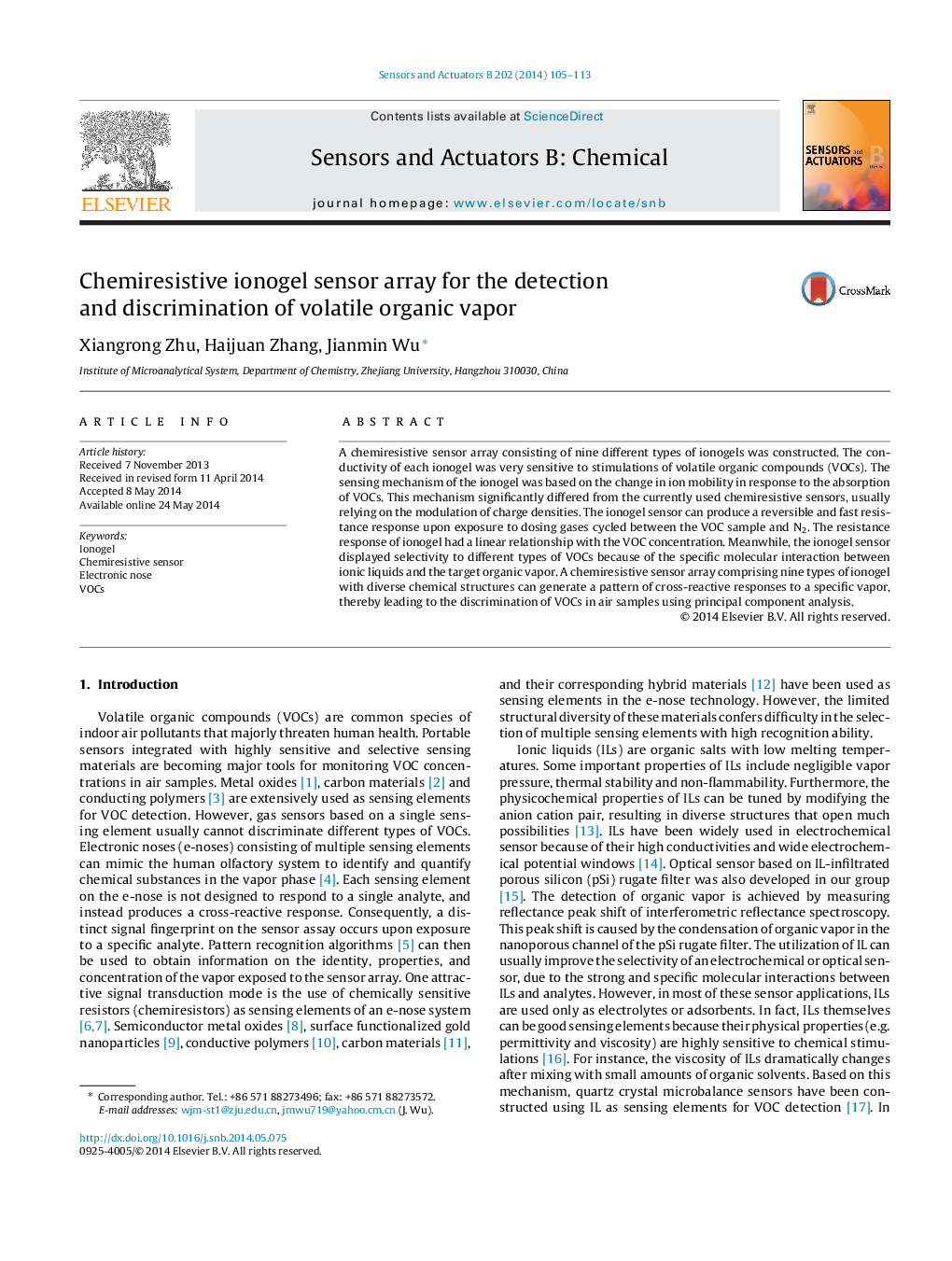| Article ID | Journal | Published Year | Pages | File Type |
|---|---|---|---|---|
| 742653 | Sensors and Actuators B: Chemical | 2014 | 9 Pages |
•Ionogels have been successfully used as chemiresistive materials for VOCs sensing.•The ion mobility in ionogel sensitively responds to the stimulation of VOC, resulting in the resistance change of the ionogel.•Encapsulating ionic liquids in silica gel matrix could not only retain resistance response, but also significantly improved the sensitivity and stability of the sensing materials.•By exploiting the structural diversity of ILs, e-nose system comprising multiple ionogel sensing elements will have an enhanced capability for odor discrimination.
A chemiresistive sensor array consisting of nine different types of ionogels was constructed. The conductivity of each ionogel was very sensitive to stimulations of volatile organic compounds (VOCs). The sensing mechanism of the ionogel was based on the change in ion mobility in response to the absorption of VOCs. This mechanism significantly differed from the currently used chemiresistive sensors, usually relying on the modulation of charge densities. The ionogel sensor can produce a reversible and fast resistance response upon exposure to dosing gases cycled between the VOC sample and N2. The resistance response of ionogel had a linear relationship with the VOC concentration. Meanwhile, the ionogel sensor displayed selectivity to different types of VOCs because of the specific molecular interaction between ionic liquids and the target organic vapor. A chemiresistive sensor array comprising nine types of ionogel with diverse chemical structures can generate a pattern of cross-reactive responses to a specific vapor, thereby leading to the discrimination of VOCs in air samples using principal component analysis.
